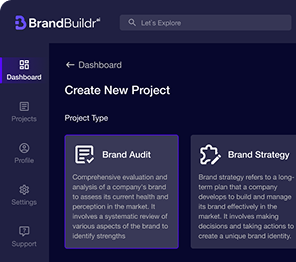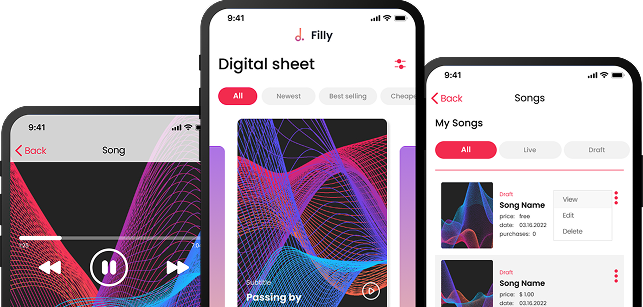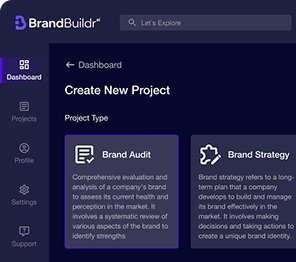Launching a startup often begins with an innovative idea, but turning that idea into a tangible product requires strategic planning, execution, and resource management. Among the most critical steps in the early stages of a startup is building a Minimum Viable Product (MVP). An MVP serves as a streamlined version of your product, designed to test your concept in real-world conditions, gather meaningful user feedback, and attract investors. By focusing on core functionalities, an MVP allows startups to validate their assumptions while minimizing costs and risks.
However, creating an MVP requires more than just a clear vision — it demands meticulous budgeting to ensure resources are allocated efficiently without overspending. In this article, we’ll dive into the key factors influencing MVP development costs and share essential budgeting tips to help startups achieve their goals without breaking the bank.

What is an MVP and Why is it Important?
An MVP, or Minimum Viable Product, is a simplified version of a product that includes only the essential features required to address the primary problem it aims to solve. The goal is not to deliver a polished, feature-complete product but to launch a functional prototype that can provide the following benefits:
- Testing Viability: Validate your business idea in real-world scenarios.
- Gathering Feedback: Learn from actual users and improve your product.
- Attracting Investors: Showcase the value of your concept in a tangible form.
- Avoiding Overdevelopment: Save time and money by focusing on essentials.
By prioritizing simplicity and functionality, an MVP helps startups refine their product, identify market fit, and lay the groundwork for future growth.

Factors Influencing the Cost of an MVP
The cost of building an MVP depends on various factors, each contributing to the scope, complexity, and resources required. A clear understanding of these elements can help you budget effectively:
1. Product Type and Complexity
The nature of your product plays a significant role in determining its development cost. A basic mobile application with limited features will generally cost less than a sophisticated platform requiring complex integrations, advanced algorithms, or data processing. The more intricate the features, the higher the development expenses.
2. Design Requirements
Creating an intuitive, visually appealing user interface (UI) is essential for any product. Simple wireframes may suffice for initial testing, but high-fidelity designs with customized elements can add to the cost. Striking a balance between aesthetics and functionality is key.
3. Development Team
The expertise and composition of your development team significantly impact costs:
- In-House Teams: Higher upfront costs due to salaries, benefits, and operational overhead.
- Freelancers: Cost-effective but may lack the cohesion of a dedicated team.
- Development Agencies: Provide professional, end-to-end solutions but at a premium cost.
- Outsourcing: A popular choice for startups, offering quality development at a lower price point in regions like Eastern Europe, South Asia, or Latin America.
4. Technology Stack
Your choice of technology, including programming languages, frameworks, and tools, will also influence costs. Open-source technologies are often more affordable, but certain projects may necessitate paid tools or licenses for better performance or scalability.
5. Platform Choices
Whether your MVP is developed for the web, mobile devices, or both can affect costs. A single-platform MVP is more affordable than building for multiple platforms simultaneously. Consider your target audience’s preferences when making this decision.
6. Development Timeline
The urgency of your launch can impact costs as well. Tight deadlines often require more resources and result in higher expenses, while a more flexible timeline allows for cost-efficient planning.
7. Testing and Quality Assurance
Rigorous testing ensures your MVP performs smoothly and meets user expectations. While essential, quality assurance (QA) adds to development costs. Investing in thorough testing can prevent costly errors post-launch.
Average Costs of Building an MVP
While the cost of an MVP varies greatly depending on the factors above, here are some general estimates:
- Simple MVP: $10,000 to $50,000
- Moderately Complex MVP: $50,000 to $100,000
- Highly Complex MVP: $100,000+
Costs may differ based on location, with development in regions like North America or Western Europe being more expensive than in Eastern Europe, South Asia, or Latin America.

Budgeting Tips for Startups
1. Start with a Clear Vision
Define the problem your product aims to solve and the key features required to address it. Avoid adding unnecessary features at this stage to keep costs under control.
2. Prioritize Features
Use techniques like the MoSCoW method (Must-have, Should-have, Could-have, and Won’t-have) to identify the features that are essential for your MVP. This prioritization ensures you focus on delivering maximum value with minimum resources.
3. Choose the Right Development Team
- Evaluate Expertise: Ensure the team has experience in building MVPs for your industry.
- Consider Outsourcing: Outsourcing to cost-effective regions can save money without compromising quality.
- Build Partnerships: Collaborate with a reliable development agency or freelancers who can align with your vision.
4. Leverage Open-Source Tools
Opt for open-source frameworks, libraries, and tools to reduce development costs. Examples include React Native for mobile apps and Django for web development.
5. Use Agile Development
Agile methodologies focus on iterative development and continuous feedback, allowing you to make adjustments without overhauling the entire project. This approach helps in optimizing costs and timelines.
6. Plan for Hidden Costs
Account for unexpected expenses, such as:
- Additional QA or testing cycles.
- Changes in project scope based on feedback.
- Third-party integrations or API costs.
A contingency budget (typically 10-20% of the total cost) can help you manage these surprises.

7. Invest in UX/UI Early
User experience plays a crucial role in the success of your MVP. Allocate resources to create a clean, intuitive interface that appeals to your target audience.
8. Monitor Progress
Track development milestones and budget utilization closely. Tools like Trello, Jira, or Asana can help manage timelines and costs effectively.
9. Test with a Target Audience
Instead of launching your MVP to the general public, test it with a smaller target audience. This approach allows you to gather valuable feedback while minimizing the cost of large-scale errors.
10. Consider Low-Code/No-Code Solutions
For startups with limited budgets, low-code or no-code platforms (e.g., Bubble, Webflow) can be an excellent way to build functional MVPs quickly and affordably.
Case Studies: Successful MVPs
1. Dropbox
Before developing its full-fledged platform, Dropbox created a simple explainer video showcasing its product concept. This low-cost MVP validated demand and attracted investors.
2. Airbnb
Airbnb started by renting out air mattresses in a single apartment, coupled with a basic website. The simplicity of this MVP helped them refine their idea and expand based on real user feedback.
3. Twitter
Initially built as an internal service called "Twttr," the platform was launched with minimal features. The feedback from early adopters guided its growth into a global social media giant.

Key Metrics to Track Post-MVP Launch
After launching your MVP, it’s crucial to track metrics that indicate its performance and areas for improvement:
- User Engagement: Measure how users interact with the product.
- Retention Rates: Track how many users return after their first interaction.
- Conversion Rates: Identify how effectively your MVP converts users into paying customers.
- Feedback and Reviews: Collect qualitative data to refine your product.
- Revenue Generated: Assess if your MVP meets financial goals or attracts investors.
An MVP isn’t just a product—it’s a strategic stepping stone that turns innovative ideas into actionable realities while keeping budgets under control.
Conclusion
Building an MVP is a strategic milestone in the startup journey, serving as the foundation for validating your idea, attracting stakeholders, and paving the way for future development. By understanding the factors that influence MVP costs and implementing smart budgeting practices, startups can maximize value while minimizing waste.
At Codebridge, we specialize in helping startups bring their ideas to life with cost-efficient, high-quality MVPs tailored to their needs. Whether it’s feature prioritization, agile development, or leveraging cutting-edge tools, our team provides expert guidance every step of the way.
Take the first step toward turning your vision into reality. Contact us today for a consultation and explore how we can help you build an MVP that sets your startup on the path to success.
Heading 1
Heading 2
Heading 3
Heading 4
Heading 5
Heading 6
Lorem ipsum dolor sit amet, consectetur adipiscing elit, sed do eiusmod tempor incididunt ut labore et dolore magna aliqua. Ut enim ad minim veniam, quis nostrud exercitation ullamco laboris nisi ut aliquip ex ea commodo consequat. Duis aute irure dolor in reprehenderit in voluptate velit esse cillum dolore eu fugiat nulla pariatur.
Block quote
Ordered list
- Item 1
- Item 2
- Item 3
Unordered list
- Item A
- Item B
- Item C
Bold text
Emphasis
Superscript
Subscript





















.avif)



.avif)

.avif)


